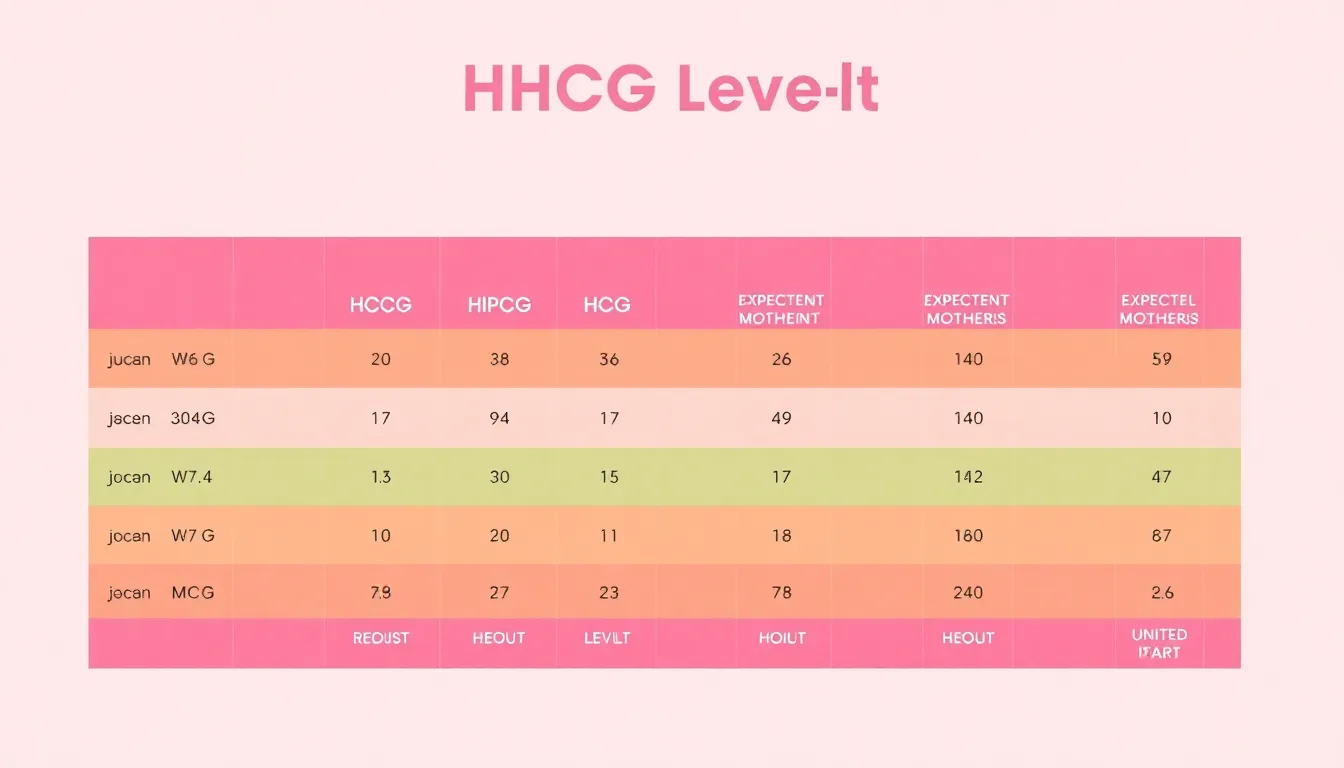Experiencing a miscarriage can be one of the most challenging events in a person’s life. At just five weeks into pregnancy, many may wonder about the significance of HCG (human chorionic gonadotropin) levels and how they relate to the health of the pregnancy. Understanding these hormone levels can provide crucial insights into what might be happening in the early stages.
HCG plays a vital role in maintaining pregnancy, but fluctuations in its levels can indicate potential complications. For those navigating this difficult journey, knowing what to expect regarding HCG levels can help ease some anxiety and provide clarity. This article delves into what HCG levels typically look like at five weeks and how they can inform one’s understanding of miscarriage risk.
Table of Contents
ToggleUnderstanding HCG Levels
HCG levels offer crucial insights into pregnancy health, especially during the early weeks. Monitoring these levels can help identify potential complications.
What is HCG?
HCG, or human chorionic gonadotropin, is a hormone produced during pregnancy. The placenta secretes HCG shortly after fertilization, typically within six days. This hormone plays a vital role in maintaining pregnancy and supports fetal development. HCG can be detected in blood and urine, making it a key marker in early pregnancy tests.
Importance of HCG in Early Pregnancy
HCG serves several important functions during early pregnancy. It stimulates the production of progesterone, essential for thickening the uterine lining. It also helps inhibit ovulation, preventing further pregnancies while one is ongoing. Normal HCG levels typically rise rapidly in early pregnancy, doubling every 48 to 72 hours. Monitoring these levels can help identify abnormal conditions, such as potential miscarriages or ectopic pregnancies. Understanding HCG levels provides clarity and peace of mind regarding pregnancy health at this critical stage.
Normal HCG Levels at 5 Weeks


At five weeks of pregnancy, HCG levels play a critical role in assessing pregnancy health. Typical HCG levels vary, and understanding the expected ranges can help individuals gauge their situation.
Expected Ranges for Healthy Pregnancies
Normal HCG levels during the fifth week of pregnancy typically range from 18 to 7,340 mIU/mL. Levels below 18 mIU/mL may indicate a risk of miscarriage or ectopic pregnancy, while levels above 7,340 mIU/mL can suggest a multiple pregnancy or other complications. A healthcare provider often monitors these levels through blood tests to determine the health of the pregnancy.
| HCG Level (mIU/mL) | Interpretation |
|---|---|
| Less than 5 | Not pregnant |
| 5-24 | Uncertain; further evaluation needed |
| 18-7,340 | Normal for 5 weeks |
| Above 7,340 | Possible multiples or complications |
Factors Influencing HCG Levels
Various factors can influence HCG levels during early pregnancy. These include:
- Gestational age: HCG levels should consistently rise during early pregnancy.
- Individual health: Factors such as weight, age, and overall health may affect HCG production.
- Multiples pregnancy: Carrying twins or more can lead to higher HCG levels.
- Health conditions: Conditions like ectopic pregnancies or certain types of tumors can lower HCG levels.
- Laboratory variations: Different labs may have varying reference ranges, affecting interpretation.
Understanding HCG levels at five weeks helps individuals stay informed about pregnancy health and any potential issues that may arise.
Miscarriage and HCG Levels
Monitoring HCG levels provides crucial information regarding pregnancy viability, particularly in cases of miscarriage. Understanding the dynamics of these levels during early pregnancy can highlight potential complications.
How HCG Levels Change During a Miscarriage
HCG levels typically rise in healthy pregnancies, doubling every 48 to 72 hours. In cases of miscarriage, HCG levels show distinct patterns. Declining levels indicate the loss of support for the pregnancy. Levels may plateau or decrease gradually, which often signals an impending miscarriage. It’s essential to note that individual variations occur; not all declines guarantee miscarriage, but significant drops raise concerns about pregnancy outcome.
Indicators of Miscarriage Based on HCG Levels
Certain HCG level ranges act as indicators for potential miscarriages. Levels below 18 mIU/mL at five weeks, particularly if accompanied by other symptoms, suggest possible complications. Healthy pregnancies usually present HCG levels within the range of 18 to 7,340 mIU/mL. Levels exceeding 7,340 mIU/mL may point to multiple pregnancies. Consistently abnormal levels prompt the need for further medical evaluation to assess the situation accurately. Monitoring these values allows for timely interventions when necessary.
Monitoring HCG Levels
Monitoring HCG levels plays a crucial role in assessing pregnancy health during the early stages. Understanding how to test and how often to monitor these levels can provide insights into potential complications.
Testing Methods for HCG Levels
Testing for HCG levels can occur through two primary methods: blood tests and urine tests.
- Blood Tests: Blood tests measure the exact concentration of HCG in the bloodstream. Healthcare providers typically recommend this method for a more accurate assessment.
- Urine Tests: Urine tests, often performed with home pregnancy tests, provide a qualitative result, indicating only whether HCG is present without specifying the exact level.
While urine tests are convenient, blood tests offer precise numbers and are more effective in monitoring changes over time.
Frequency of Monitoring in Early Pregnancy
Monitoring frequency for HCG levels often depends on individual circumstances. Recommendations typically include:
- Initial Testing: At five weeks, individuals often receive the first blood test to establish baseline HCG levels.
- Follow-Up Testing: Healthcare providers recommend follow-up blood tests every 48 to 72 hours. This interval allows for the observation of expected doubling in HCG levels, indicating a healthy pregnancy.
In cases with complications or concerns, healthcare providers may suggest more frequent monitoring to ensure appropriate pregnancy progression. Understanding these monitoring practices offers clarity and reassurance during this critical period.
Navigating the complexities of early pregnancy can be challenging especially when monitoring HCG levels at five weeks. Understanding the significance of these hormone levels provides individuals with essential insights into their pregnancy health. By recognizing the normal ranges and potential indicators of complications, they can approach this sensitive time with greater awareness and preparedness.
Regular monitoring and open communication with healthcare providers are vital for addressing concerns and ensuring the best possible outcomes. Ultimately staying informed about HCG levels can empower individuals during this critical stage of their pregnancy journey.



